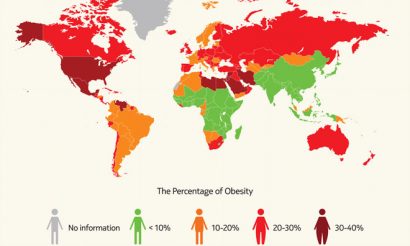Contributing authors to this article: Héctor E. Alcalá, PhD; Roger Anderson, PhD; and Rajesh Balkrishnan, PhD.
Rural, poor and sick: The unseen cancer crisis in America
Posted: 20 October 2016 | Aaron Yao, PhD, University of Virginia School of Medicine | No comments yet
PhD student Aaron Yao highlights the shocking disparities between rural and urban eastern America and how the odds of cancer survival do not favour the impoverished…


The Appalachia district has the highest cancer death rate across the US
The eastern regions of the USA, in particular rural Appalachia, has gone from having the lowest cancer death rate in the country to the highest – and that’s just part of a growing cancer crisis in the region, new research from the University of Virginia School of Medicine suggests.
Rural Appalachia has seen disturbing trends across the continuum of cancer care, from screening to diagnosis to treatment, survival and mortality, even as the rest of the country makes major strides in the battle against the disease.
“Look at the war on poverty that President Johnson declared decades ago. We lost that war. We didn’t fix the poverty issue in rural Appalachia, and [the residents there] have really, really bad cancer outcomes,” said researcher Aaron Yao, PhD, of the School of Medicine and the UVA Cancer Center.
“We lost the war on poverty, and we’re not doing much to battle the healthcare disparities in rural Appalachia. Because we can see it from our results: It’s getting worse.”
The researchers label the disparities “pervasive” and call for a “systematic effort … to reduce the burden of cancer for rural Appalachia.”
Troubling Trends
Yao and other researchers in UVA’s Department of Public Health Sciences examined decades of data obtained from the National Center for Health Statistics. Here are some of their alarming findings:
- Between 1969 and 2011, cancer incidence declined in every region of the country except rural Appalachia, where it increased.
- During that time, rural Appalachia went from having the lowest cancer death rate in the country to the highest.
- Cancer mortality rates during 2007-11 were 14.7% higher in the rural Appalachian counties in Virginia than in non-Appalachian urban areas in the rest of the country. In the rural Appalachian areas of Kentucky, mortality rates were 36% higher.
- Rural residents in every other state in the Appalachian region, except for Maryland, had higher mortality rates than their urban counterparts.
- Breast cancer is less likely to be caught early in rural Appalachia than elsewhere.
- People in Appalachia are more likely to die within three to five years of their cancer diagnoses than people in urban areas outside Appalachia.
“Almost 40% more cancer mortalities [in rural Kentucky] than in the other United States,” Yao said. “I think that’s crazy.”
Challenges to Care
While the new study focuses on cancer trends, it also discusses some of the contributing factors. Yao observed that there are many economic, geographic and political challenges that stand in the way of providing quality cancer care to rural Appalachia.
“They don’t use a lot of healthcare. It means they don’t spend a lot of CMS [Centers for Medicare and Medicaid Services] money, and if you don’t spend, you won’t be considered high-cost patients,” Yao said. “If you’re not high-cost patients, it is hard to draw attentions from policymakers and payers.”
He noted that Appalachia is a beautiful place, rich with opportunity but plagued with poverty. Its people tend to be fiercely independent, to their detriment in this instance, he said. “It’s very invisible. You don’t hear their voices, right? They kind of represent the old days of America,” he said. “That’s the ideology of America: self-sufficient and independent. Those are their American values. They don’t complain, so that’s why you don’t hear it.”


Access to affordable health care in rural America is limited
Access Issues
Another perpetual challenge in Appalachia is access to healthcare providers. Because of the relatively low population numbers, travel times and distances can be significant – a particular obstacle for people with limited transportation options.
“If they don’t come to a comprehensive centre, they just get treatment in their local hospitals,” Yao said. “But the literature has shown, if you get treatment at a comprehensive cancer centre, you get better outcomes.”
Combine that with widespread poverty throughout the region, and you have the recipe for late diagnosis and higher death rates. “When we look at treatment, their three-year survival rates and the five-year survival rates are not doing as well as the majority of Americans,” Yao said. “Even if we limit it to the same stage, say the early stage, the people in Appalachia are still doing worse.”


He noted there are other factors at play as well.
“It’s not just healthcare. It’s not just the healthcare delivery system. There’s lifestyle stuff related to their economy,” such as widespread obesity and high smoking rates, Yao said.
“Not only can we do something about their healthcare, maybe we can also improve their local economy by inviting foreign manufacturers to invest in beautiful rural Appalachia.”
Related conditions
Cancer



